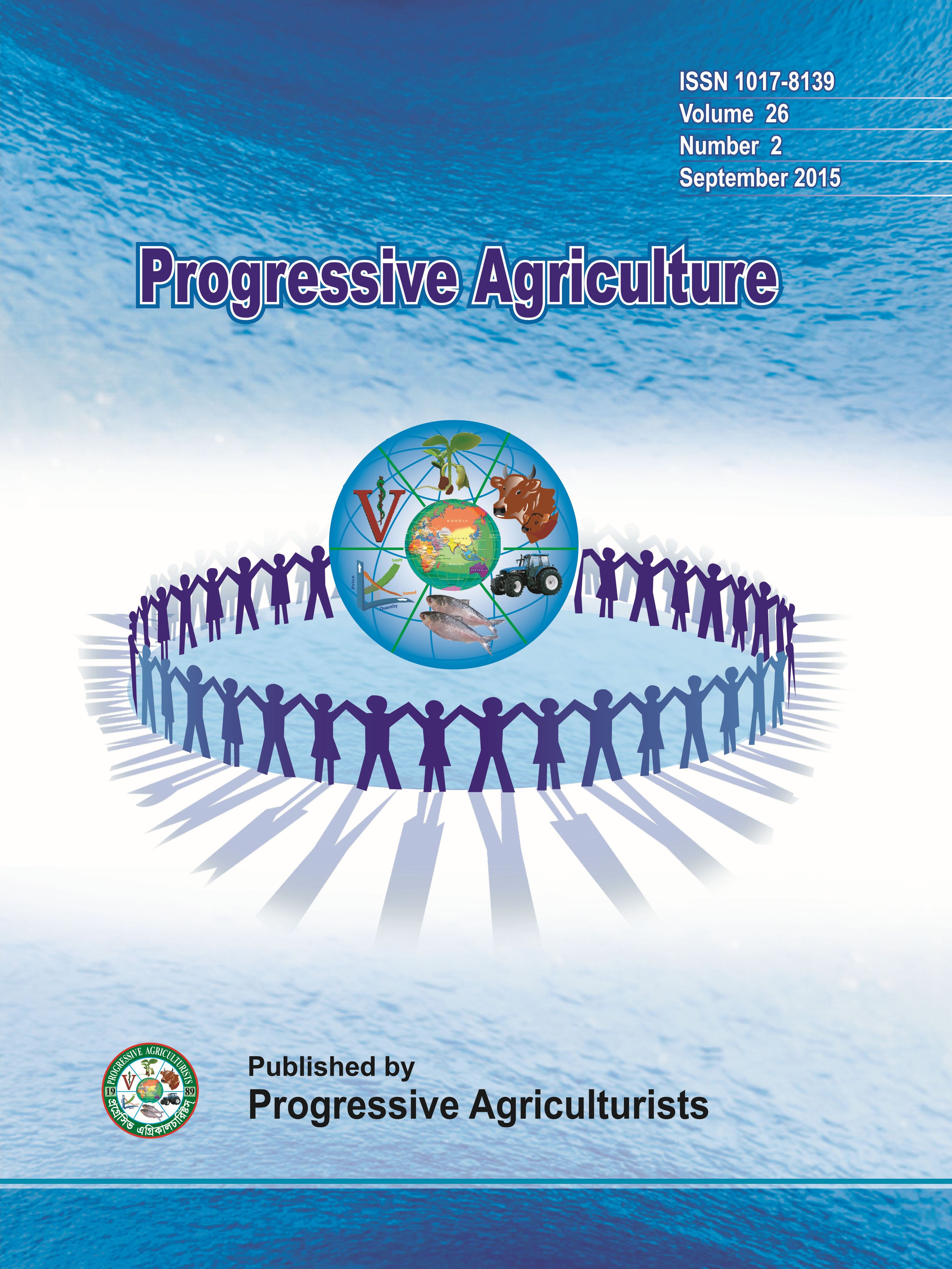Comparative profitability analysis of IPM and non-IPM technology on vegetable cultivation in selected areas of Kishoreganj District in Bangladesh
DOI:
https://doi.org/10.3329/pa.v27i3.30812Keywords:
IPM, vegetables, comparative profitability, problem confrontationAbstract
The present study is an attempt to examine the socioeconomic characteristics and compared profitability analysis of both IPM and Non-IPM vegetable growers, and to identify the problems faced by vegetables growers in use of IPM practices in some selected areas of Kishoreganj district. A total of 45 farmers were purposively selected where three different IPM practices were taken into consideration. To get a more complete picture of vegetable production using both IPM and non-IPM technology, the socio-economic profile of farmers was examined and compared. The study found that IPM farmers were in better-off condition than that of non-IPM farmers in all types of socioeconomic characteristics. The major findings of the study revealed that production of all the selected vegetables were profitable for both IPM and non-IPM farmers. But, IPM based cultivation was more profitable than that of non-IPM based cultivation. Average total costs were Tk. 86352.8 and Tk. 100061.5 for IPM and non-IPM farmers, respectively. Average gross returns were Tk. 257293.3 and Tk.235788.8 for IPM and non-IPM farmers, respectively. The average net return for IPM farmers was Tk.170940.5 and for non-IPM farmers it was estimated at Tk. 135727.3. The average benefit cost ratio for IPM farmers was 2.9 and for non-IPM farmers it was estimated at 2.3. Most of the farmers were in the categories of low to medium problem confrontation in using IPM practices. The first ranked constraint is lack of training facility. Thus, massive extension facility including training is needed in the study areas to increase the extent of use of IPM technology.
Progressive Agriculture 27 (3): 311-319, 2016
Downloads
152
184

